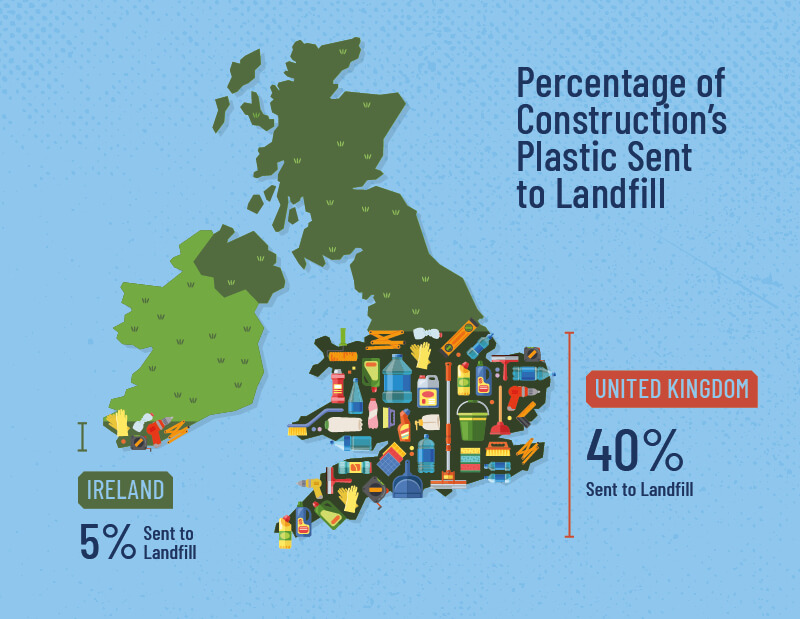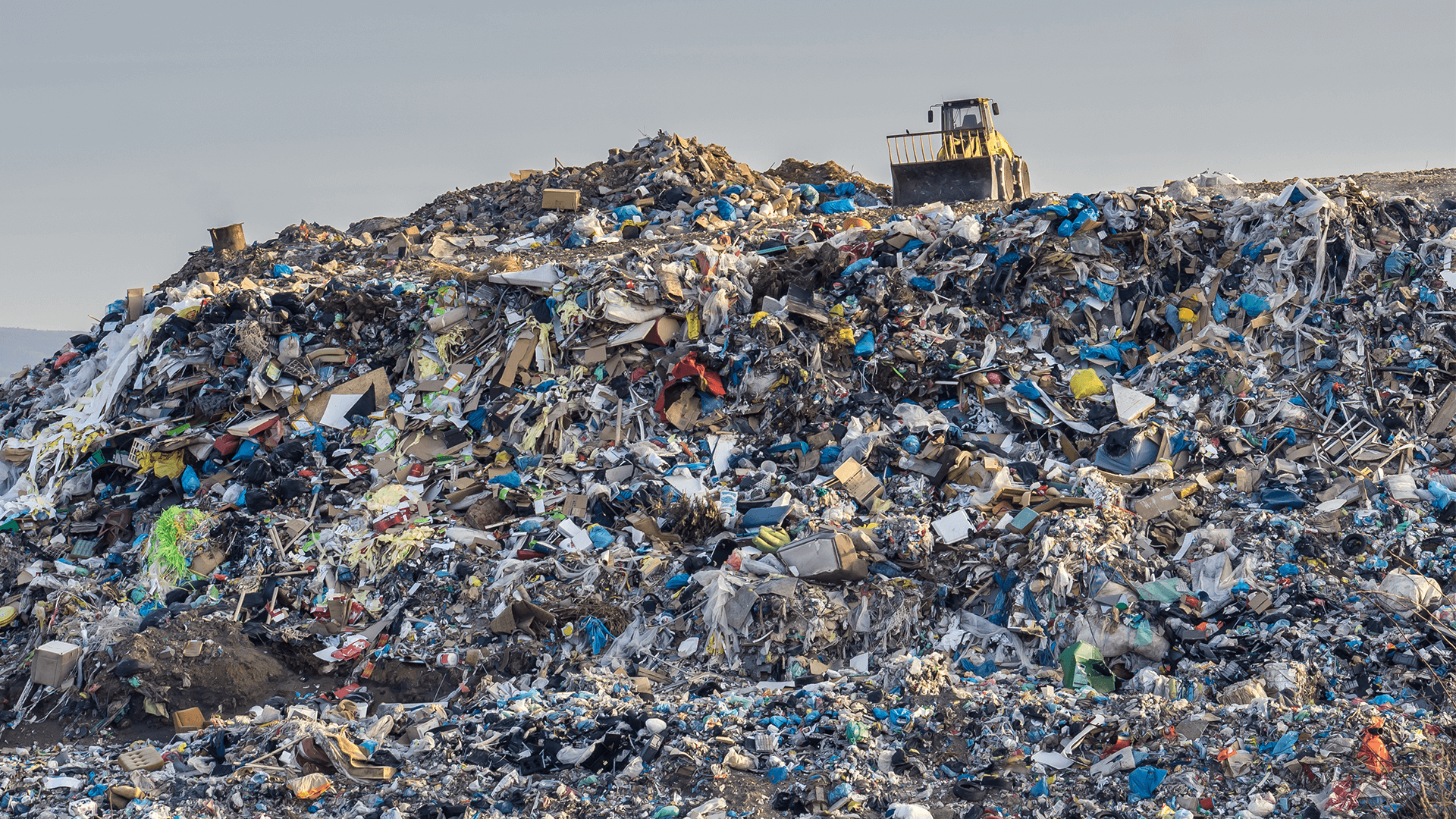Did you know that the UK uses over 5 million tonnes of plastic, every year? That’s the same weight as 15 Empire State Buildings. Unfortunately, it gets much worse, too; the construction sector accounts for almost a quarter (23%) of this plastic.
This shouldn’t be a surprise – the sector is heavily reliant upon the material for its cheapness, durability and water-resistance. But unfortunately, what makes the material so useful, is also part of its demise. The resilience of plastic means it can take up to 1000 years to decompose. And whilst it degrades, it contaminates our soils and oceans with the release of fossil fuels and greenhouse gases.
So, to celebrate ‘Plastic Free July’, Insulation Express have uncovered the practical solutions contractors can utilise to reduce their plastic footprint.
The Most Common Sources of Plastic Waste in Construction
When plastic is used in a permanent form, it can be vital as a building material. However, when the material is single-use plastic, this becomes a bigger problem, that’s wasteful and can be easily avoided. These are the most common sources of plastic waste in construction:
- Plastic packaging
- Unused material from over-ordering and offcuts
- Improper storage and handling
- Over-specified project design
- Workforce food packaging and utensils
Construction’s Biggest Plastic Problem: Packaging Waste
Annually, 50,000 tonnes of plastic packaging waste is produced by the UK’s construction sector. That’s four times the weight of the Brooklyn Bridge – all to create single-use plastic packaging.
Much of that waste is incinerated, adding toxic fumes to the air we breathe. Another big chunk of this packaging is placed in mixed waste skips, which are impossible to recycle as they can’t be identified.
In turn, this method has helped contribute to the 5 trillion micro-plastic particles floating around our oceans, which we then consume by drinking water or eating fish.
40% of Plastic Waste from UK Construction is Sent to Landfill
It’s estimated that around 40% construction’s plastic leaves construction sites in mixed waste skips, which then heads to landfills. This amounts to around 20,000 tonnes of plastic – a weight that is twice as heavy as the Eiffel Tower.
Comparatively, Germany is on the other end of the scale. They recover and recycle a huge proportion of the plastic waste in construction. Every year, they generate around 201.8 million tonnes of waste in construction and demolition, but around 90% of that is recycled. 80% of the plastic waste is recycled.

5 Ways Construction Can Reduce Their Plastic Packaging Waste
It is clear that the amount of plastic being sent to landfill is not sustainable for either the environment or construction.
Most of the industry realises something needs to change, with 95% of construction professionals admitting that the industry needs to reduce plastic use. But, how can this be achieved?
- A huge proportion of packaging thrown away can often be reused. Talk to your supplier to see if they can reduce their packaging or take back the packaging to recycle yourself.
- Try and order your productions in bulk or larger packs. This will cut the volume of packaging per item and reduce the need for multiple polypropylene bags.
- Use reusable plastic boxes to place and protect materials – before returning the boxes to the supplier.
- For the plastic packaging that can’t be recycled, send it to a licensed Waste Management Contractor. They are best placed to decide their destination.
- Use large sheets of plastic sheeting that arrived as wrapping for use on site as weather protection.
In addition, a reduction in packaging waste can come with a financial benefit, too. One contractor Risby Homes saved £13,000 on a 25-home development project, simply by reducing, reusing and recycling their plastic waste.
Future Innovations: Ways Plastic is Being Transformed Across Construction
In addition, Insulation Express have also uncovered the innovative ways the sector is reusing waste materials.
- Nappy Roofing– More than half a million tonnes of waste is created in Britain from disposable nappies, and with each one taking around 500 years to decompose this is a concerning problem. But, instead of letting the waste decompose, you could be looking at roofing your house with them. A company have found a way to turn waste nappies into roof tiles, which could save 110,000 tonnes of CO2 emissions a year.
- Plastic Roads– Roads are traditionally made from asphalt which uses stone and gravel to form the infrastructure. However, future roads could be made from used plastic – dubbed plasphalt. Amazingly, as well as a way of recycling plastic, this method of forming pavements is also stronger than asphalt and less expensive.
- Plastic Concrete – Researchers from Bath University have found an ingenious way to save sand and reuse plastic waste. The scientists have discovered that 10% of the sand in concrete can be replaced with plastic waste. Concrete requires 30% of sand, which strips our beaches and riverbeds. Just replacing 10% of it can save over 800 million tonnes of sand.
What Does the Future Hold for Plastic in Construction?
The construction sector still needs plastic – as previously mentioned, it’s durable, waterproof and lasts long. However, the industry needs to focus on reducing its single-use plastic, especially its packaging waste. Additionally, in the future we may see a massive take up of alternatives to plastic in construction, as some of these are already being developed and trialled. But for the average construction professional, you can reduce plastic use by talking to your supplier, educating your workforce and setting a good example to employees.

































